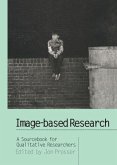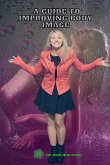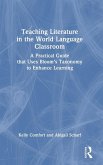Contents: K.S. Fleckenstein, Introduction: Teaching Vision: The Importance
of Imagery in Reading and Writing. Part I:Provenance: Authorizing the
Image.K.S. Fleckenstein, Inviting Imagery Into Our Classrooms. C.L. Hobbs,
Learning From the Past: Verbal and Visual Literacy in Early Modern Rhetoric
and Writing Pedagogy. Part II:Mental Vision.T.P. Guezzar, Mental Imagery
and Literature: Centers and Vectors in Students' Visual and Verbal
Responses. D. Innocenti, The Mind's Eye View: Teaching Students How to
Sensualize Language. S.A. Mylan, Sight and Insight: Mental Imagery and
Visual Thinking in the Composition Classroom. C. Worthman, The World
Through Different Eyes: Mental Imagery, Writing, and the
Reconceptualization of the Self and Others. Part III:Graphic Vision.E.H.
Hobson, Teaching the Language I/My Students See. R.F. Fox, Images Across
Cultures: Exploring Advertising in the Diverse Classroom. G. Hecimovich,
Technologizing the Word: William Blake and the Composition of Hypertext.
R.M. Smith, Technology, Symbol, and Discourse: Writing Within the
Information Overload. Part IV:Verbal Vision.M.P. Sheridan-Rabideau,
Calling All RadioGirls: Talking to a New Image. C. Friend, Seeing Ourselves
as Others See Us: The Maternalization of Teaching in Everyday Talk. D.A.
Worley, Textual Vision: Moving Beyond "Same/Other" in Reading
African-American Literature. N. Teich, "Spots of Time"--Writerly and
Readerly Imaging With William Wordsworth and Basho. L.T. Calendrillo,
Conclusion: Afterimage: Resources for Imagery Study.









